#advanced membrane materials
Explore tagged Tumblr posts
Text
Breaking Down the Mechanics of Pressurized Membrane Modules
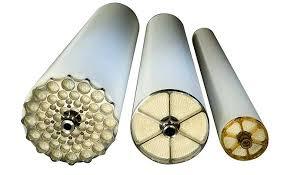
Pressurized membrane modules serve as a fundamental technology for processing water and food products while supporting pharmaceutical development alongside various industrial production processes. Membrane modules represent one of several membrane system types that lead to current industrial adoption among multiple organizational applications.
Hydraulic pressure functions in these systems to pull objects through semi-permeable barriers so that the modules can execute desired separations of essential materials from undesirable ingredients. A detailed study of pressurized membrane modules explores their operational mechanism and their benefits alongside their current and projected uses.
1. Working Principle of Pressurized Membrane Modules
Pressurized modules push liquid by using external pressure to pass fluids through permeable membranes featuring tiny pores that block the passage of particles microorganisms and other impurities. Membrane systems operate with pressurized units to carry out filtration techniques including RO (Reverse Osmosis) while also providing UF (Ultrafiltration) MF (Microfiltration) and NF (Nanofiltration). The basic operation involves the following steps:
Feed Water Input: Each module accepts a feed solution that can consist of either pure water or various liquid mixtures.
Pressure Application: An external pressure difference applies to the membrane. The system design determines which mechanism such as pumps will create this pressure.
Separation Process: Membrane pressure pushes liquids from one side while letting molecules with smaller dimensions pass forward while trapping other particles so they collect on the opposite side.
Permeate and Concentrate Streams: The membrane separates liquid into two components - permeate exists as the clear passing solution and the retained substances become concentrated or retentate.
Membrane module operation based on pressure reaches its performance through management of pre-applied pressures that differ according to filtration types. Port de pressure levels differ between membrane filtration techniques where reverse osmosis demands high pressure but ultrafiltration and microfiltration function with lower pressures.
2. Design and Structure
The design of the quality membranes modules is an integral part of their efficiency and performance. There are a number of structural features that make the filtration process optimal for several applications.
Membrane Configuration: Membranes are configured in various forms according to the type of filtration. Common configurations include spiral wounds, hollow fiber, flat sheets, and tubular membranes.
Spiral Wound Membranes: These are the most common form of membrane arrangement used in pressurized modules. They have membrane sheets wrapped around a central core. They provide a very high surface area in a very compact form and are, therefore, very efficient.
Hollow Fiber Membranes: The membranes are essentially tiny fibers through which the liquid flows. These are usually employed for applications where high flux rates are required, such as desalination of water.
Tubular Membranes. These are composed of rigid tubes and can accommodate highly viscous fluids; it is often more industrial and commercial in applications.
Pressure Vessel and Housing: The housing structure contains the membrane and maintains the structural integrity in addition to ensuring protection from damaging elements while under operation. In addition, such vessels can hold up to highly elevated operating pressures to maintain long-term service.
Flow Path Configuration: The flow path in these modules is designed so that the filtering efficiency is achieved at its optimum. The feed flow can either be cross-flow or dead-end flow, arranged according to what the system calls for.
3. Applications of Pressurized Membrane Modules
These quality membranes modules can be applied in a wide variety of industrial applications due to their versatility. Their main use is to separate or concentrate material, and thus they are very significant in applications where high purity and specific separations are concerned.
Water Treatment: Primemtec’s pressurized membrane modules are widely used in municipal and industrial water treatment systems. Reverse osmosis membranes, in particular, are critical for desalinating seawater, treating brackish water, and purifying drinking water.
Food and Beverages: Pressurized membranes in the food industry are used in juice concentration, processing of dairy like milk filtration, and production of beer. Ultra- and microfiltration membranes separate proteins and other dissolved constituents from liquids.
Pharmaceuticals and Biotech: These modules are essential for separating biological substances, sterilizing products, and concentrating active pharmaceutical ingredients (APIs). They ensure high product purity and consistency, which are critical in pharmaceutical production.
Chemical and Petrochemical Industries: Pressurized membranes module are used in chemical recovery, solvent recovery, and other processes where the separation of complex mixtures is required. They help in reducing energy consumption and enhancing operational efficiency.
Wastewater Treatment: The membrane modules in wastewater treatment plants are used at both the filtration and treatment stages to remove contaminants from effluent streams. It ensures that treated water meets specified quality standards for compliance with environmental regulations.
Summary
Primemtec’s pressurized membrane modules stand as fundamental components of modern filtration science which deliver flexible efficient scalable industrial solutions throughout multiple domains. Through pressure-driven system operations, these technologies enable both liquid separation and purification which drives advances across water treatment alongside food processing and pharmaceutical production and multiple other vital industrial sectors. The future of sustainable and efficient filtration technology will become possible thanks to new membrane materials and system design innovations that overcome operational costs and fouling challenges.
#Pressurized membrane modules#filtration technology#reverse osmosis membranes#ultrafiltration membranes#microfiltration membranes#nanofiltration membranes#membrane system#water treatment#desalination#food and beverage filtration#pharmaceutical filtration#chemical separation#wastewater treatment#spiral wound membranes#hollow fiber membranes#tubular membranes#pressure vessel#membrane housing#industrial water purification#liquid separation#sustainable filtration technology#high-efficiency filtration#membrane fouling prevention#biotech filtration#solvent recovery#advanced membrane materials#scalable filtration solutions#energy-efficient filtration#Primemtec membrane modules#industrial filtration systems
1 note
·
View note
Text
The global gas separation membrane market is projected to reach $3,275.5 million by 2034 from $1,300.0 million in 2023, growing at a CAGR of 8.66% during the forecast period 2024-2034.
#Gas Separation Membrane Market#Gas Separation Membrane Report#Gas Separation Membrane Industry#Advanced Materials#BISResearch
0 notes
Text
Global Ion Exchange Membrane Market Is Estimated To Witness High Growth Owing To Increasing Demand From Water Treatment Sector
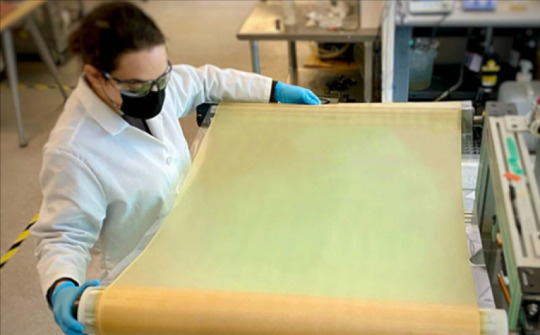
The global Ion Exchange Membrane Market is estimated to be valued at USD 833.7 million in 2021 and is expected to exhibit a CAGR of 4.38% over the forecast period of 2022 to 2030, as highlighted in a new report published by Coherent Market Insights. A) Market Overview: Ion exchange membranes are widely used in various industries, with the water treatment sector being the primary driver of market growth. These membranes are used in processes such as desalination, purification, and separation of water and wastewater. The increasing global emphasis on clean and sustainable water resources is driving the demand for ion exchange membranes. They are also used in industries such as chemical, pharmaceutical, and electrical power generation. B) Market Dynamics: One of the key drivers of the ion exchange membrane market is the increasing demand for clean water worldwide. Rapid industrialization and urbanization have led to a significant increase in water pollution, creating a need for effective water treatment solutions. Ion exchange membranes play a crucial role in removing contaminants and improving the quality of water for various applications. Another driver for the market is the growing adoption of renewable energy sources, such as fuel cells. Ion exchange membranes are used in fuel cell technology to facilitate the generation of clean energy. With the increasing focus on reducing greenhouse gas emissions and transitioning to a low-carbon economy, the demand for fuel cells is expected to rise, thereby driving the market for ion exchange membranes. C) Segment Analysis: The global ion exchange membrane market can be segmented by type, application, and region. Based on type, the market can be divided into cation exchange membranes and anion exchange membranes. The cation exchange membranes segment dominates the market due to its high efficiency in separating and purifying cations in water. In terms of application, the water treatment segment holds the largest market share, driven by the increasing need for clean and safe water. D) PEST Analysis: - Political: Government regulations and policies regarding water treatment and environmental protection influence the market growth of ion exchange membranes. - Economic: Economic growth and industrial development drive the demand for ion exchange membranes, especially in emerging economies. - Social: Increasing awareness about the importance of clean water and sustainable energy sources contribute to market growth. - Technological: Advancements in membrane technology, such as the development of innovative materials and improved efficiency, enhance the market potential for ion exchange membranes. E) Key Takeaways: - The global Ion Exchange Membrane Market Size is expected to witness high growth, exhibiting a CAGR of 4.38% over the forecast period, due to increasing demand from the water treatment sector. - The Asia-Pacific region is the fastest-growing and dominating region in the market, driven by rapid industrialization and urbanization. - Key players operating in the global ion exchange membrane market include AGC ENGINEERING Co. Ltd, Dioxide Materials, Fujifilm Corporation, Ion Exchange, Ionomr Innovations Inc., Liaoning Yichen Membrane Technology Co. Ltd, Membranes International Inc., Merck KGaA, ResinTech, Saltworks Technologies Inc., SnowPure, LLC, SUEZ, The Chemours Company, and 3M. In conclusion, the global ion exchange membrane market is expected to witness significant growth in the coming years, driven by the increasing demand for clean water and renewable energy sources. With advancements in membrane technology and the growing awareness about environmental sustainability, ion exchange membranes are poised to play a crucial role in ensuring a sustainable future.
#Ion Exchange Membrane Market#Ion Exchange Membrane Market Analysis#Ion Exchange Membrane Market Overview#Advanced Materials#Coherent Market Insights
0 notes
Text

ESPHINE🧬 (Extrasensorial Kaiju)
[Data] Name: Project Esphine Species: Artificial Kaiju Height: 320 ft Gender: None
Esphine is a biological weapon created for military use primarily to combat Kaiju. Although its purpose was to defend humanity, it became unstable over time and was supposed to be dismantled to prevent a disaster, but it escaped prematurely and turned against civilians.
What characterizes him are his advanced psionic (PSI) and extrasensory (ESP) abilities. He is a highly intelligent being who uses strategy to destroy his opponents, but if he enters a rampant state he will lash out like a beast. Esphine is more agile while airborne and prefers to operate in open spaces for an advantage. His membrane wings are flexible and blend in with his frontal claws
He developed a strong aversion for other Kaiju (as he was designed to) and even though he is no longer allied with humanity, he stands against strong monsters in order to defeat them.
[Abilities]
◆Psionic beam: A concentrated beam of psychic energy that can destroy everything in its path. If it divides the energy between its two tails it can unleash a dual beam instead of a single one ◆Remote sight: Similar to clairvoyance, the remote sight allows him to project his view through different places in the world when his body is idle ◆Levitation/Psychokinesis: Esphine can lift itself in the air, even objects which can be thrown as projectiles ◆PSI shield: It can shield itself with a barrier capable of resisting attacks that could be devastating ◆PSI explosion: If Esphine concentrates all his psychic power he can unleash an explosion large enough to wipe out a city. He can also produce a smaller scale version to avoid energy withdrawal ◆DNA extraction: With the arrow needles at the end of his two tails, Esphine can absorb genetic material and implement it into himself to adapt. This is quite useful when dealing with other Kaiju as it learns their weaknesses and abilities ◆Apportation/Teleportation: With enough focus, he can transfer objects to other, more distant locations. He can also teleport himself to fight distant Kaijus or to escape from an encounter ◆Psychic hold: A rather consuming move that serves to stop falling objects, projectiles and even other Kaiju in place if enough mental strength is applied. It was supposed to protect civilians from the destruction caused by other Kaiju. ◆Telepathy: Strong telepathic signals that can cause brain damage to nearby organic beings. He has learned to weaponize it against Kaiju to distract them. ◆Distortion: A hypothetical ability that suggests Esphine could break reality and create dangerous spatial rifts

*Yes his tails coil like DNA!
#digital art#art#digital illustration#concept art#aesthetic#digital drawing#creature#fantasy#oc#kaiju design#kaiju#kaiju art#godzilla#fanmade#fan kaiju#monster#creature design#creature art#monster design#fantasy creature#artwork#wings#metal#pink#blue
106 notes
·
View notes
Text
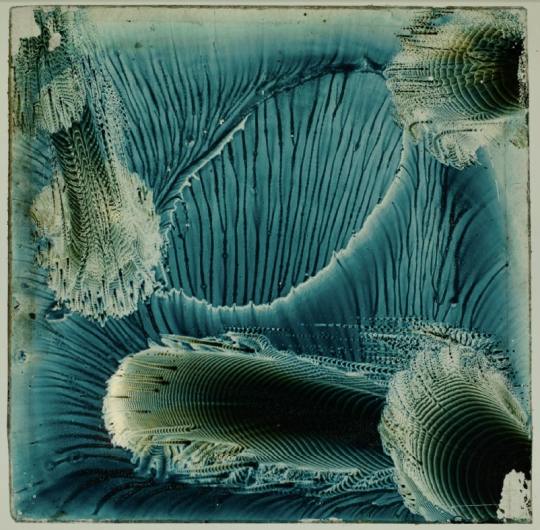
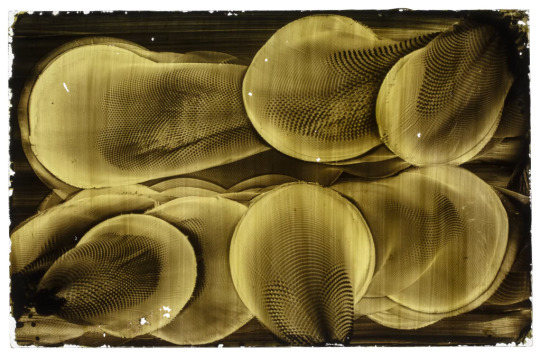
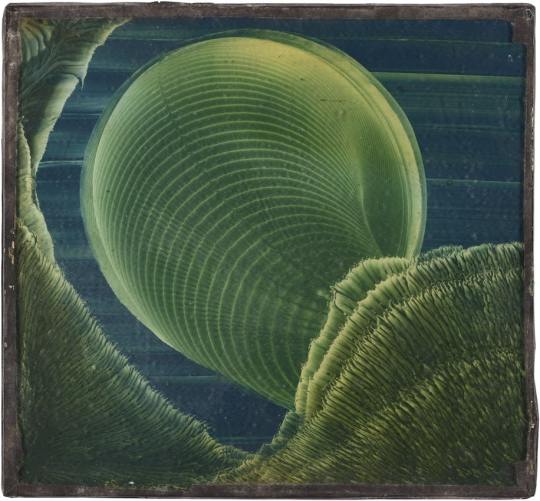



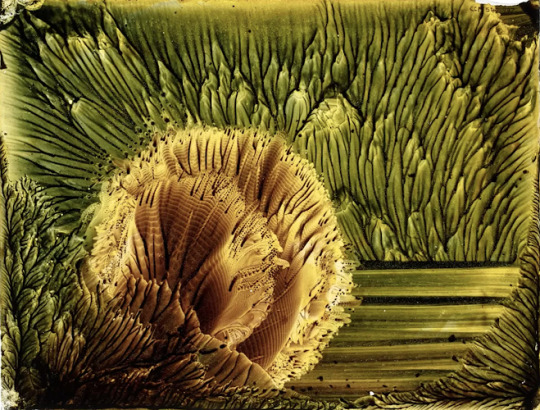

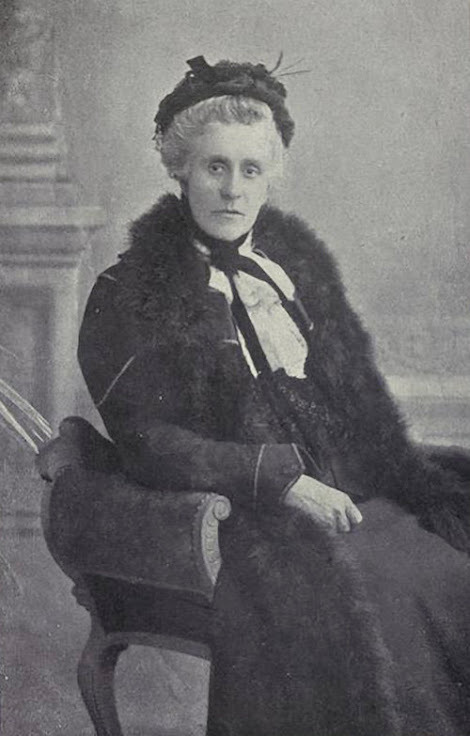
Once upon a time in 1885, Welsh singer, songwriter, scientist, and philanthropist Margaret Watts Hughes accidentally invented a method of turning her voice into images.
Hughes explained her invention, the eidophone, and her image-making process in an article for Century Magazine in 1891:
"In 1885, while seeking means to indicate readily the intensities of vocal sounds, I first met with these [voice] figures, and, owing to their variety both in form and production, they have since absorbed much of my attention. The apparatus I have employed I call the eidophone. This is very simple. It consists merely of an elastic membrane, such as thoroughly flexible soft sheet-rubber, tightly stretched over the mouth of a receiver of any form, into which receiver the voice is introduced by a wide-mouthed tube of convenient shape. In some cases the receiver may be dispensed with, and the membrane be stretched across the open end of the tube itself.
My first experiments were made with sand, lycopodium powder, or the two substances mixed. I then tried for the production of voice-figures, flooding the disk of the eidophone with a thin layer of liquid ; e.g. water or milk. Upon singing notes of suitable pitch through the tube, not too forcibly, beautiful crispations appear upon the surface of the liquid, which vary with every change of tone. A note sung too forcibly causes the liquid to rise in, a shower of spray, the movements of which are too rapid to be readily followed by the eye. To facilitate observation denser liquids may be used. By using such liquids as colored glycerin particularly beautiful effects may be obtained. Subsequently I found that by employing moistened powder of different consistencies yet another description of figures appears. The earliest result of my experiments in this material shows centers of motion from which radiations diverge."
By varying the sound of her voice and the materials and methods used to capture it, different patterns emerged.
If we dig a bit deeper into the process, we find greater complexity. Sophie B. Herrick did just that in Visible Sound – Comment [Century Magazine 42, 40 (1891)]:
These voice-flowers are not the simple visual forms corresponding with the vibrations of the air set in motion by the voice. The waves generated in the closed bowl of the eidophone are reflected again and again from the sides of the vessel. The volume of air inclosed has its own rate of vibration; the stretched membrane has also its own rate, which in turn is modified by the character and thickness of the paste spread upon it. Added to these are molecular forces of cohesion and adhesion between the particles of paste, and again between the paste and the membrane. The form which grows into shape is the resultant of all these complicated forces, and, in some instances, new elements of change have been added. A glass plate is placed on top of the vibrating membrane and moved over it. We have a new body introduced with its proper rate of vibration, besides a mechanical motion further to complicate the problem.
According to an article in MIT’s The Net Advance of Physics Weblog, Hughes’ “flower-like forms” were rediscovered in the 1960s by Swiss researcher Hans Jenny, who went on to coin the term cymatics to describe acoustic effects of sound wave phenomena. However it appears as if Jenny was only familiar with the black and white reproductions of Hughes works as published in her Century article.
The larger color works were thought to be lost(!) but were found in 2016 by the staff of the Cyfarthfa Castle Museum, located in Merthyr Tydfil, Wales, while digging through their archives. Taken as a whole, Hughes’ work has a foot in two camps —as part of the history and study of the physics of sound, and as part of the history of art. These works were displayed as such during her lifetime.
One can imagine that the Surrealists would have been quite taken with these voice-figures, automatism sans hands, and I find them quite beautiful and striking as works of visual art that do not fit the tidy androcentric narrative of history, art or otherwise (see Hilma af Klint for a similarly jarring example).
92 notes
·
View notes
Note
What were Mewtwo’s cloning tubes were made of? Cause they somehow they allowed the clone pokemon to pass through the grey part but keep the fluids in. What was it some super advanced polymer membrane?
I never really thought about it XD I don’t know enough about those materials to know but again, he had an aesthetic to keep up and that included the cloning tubes
148 notes
·
View notes
Text

A rather long post regarding Ha'rcar and Hu'nri'a clan. I also realized I keep writing more than planned.
The Coh'urall clan ancestors traveled very far away from Yautja Prime until they found a small planet where only animals and plants lived on.
This planet was named Ga’lea (Humans and other alien biologists started to call this planet Galatea later on, due to the vocal similarities). It was deemed by other aliens and humans unfit for survival and living, yet the ancestors of the Coh’urall found it as the right place for their new home.
Galatea is a planet composed by a few scattered islands, far away from each other; from space they are barely visible and Galatea looks like a blue planet from that distance. It has one sun and two moons, which cause high tides that totally submerge those few pieces of lands for a certain period of time.
The clan symbol is the skull of their god, decorated with shells and pearls, surrounded by motifs of tendrils. The pearly decorations are used for shields, weapons, house tools, pots, or sailing ships.
For their masks or even as tattoos, they keep the symbol simple, although some yautja manage to tattoo themselves with a glowing ink to mimic the pearl decors.
Unlike those on yautja prime, the Coh'urall clan doesn't praise either Cetanu or Paya; they lost the faith of those gods when their ancestors moved to this water planet.
The deity praised is a sea deity called U’ry’le. They are associated both with life and death. They symbolize the generosity and calmness of the ocean, yet also the ruthlessness and deadly power of it. U’ry’le is both feared and adored, and the priests of U’ry’le are highly revered. Because of their importance, the clan is a diarchy, ruled both by the matriarch and the head priest.
The Coh’urall clan lives in a complex system of underwater caves that leads to spots with dry ground. Some caves open towards the surface. This allows specific types of vegetation to grow all over the rocky walls, creating paths that lead to the land so they can hunt on the islands too, when these are not submerged.
They have partial migratory behavior. Hunters and foragers will follow the moon cycle and move towards the islands that are still out of water, only to go back to the new emerging ones once the others disappear because of the tide.
Sometimes, family groups will participate in these travels to grab more materials for their clan and to train their youngsters to swim and learn about the tides. However, most remains in the caves under the main island, which is high enough that, even with the tides, the land will remain dry and with growing vegetation.
Through the centuries of evolution, the clan presents a form of deep-sea gigantism: the females and males of the Coh'urall are taller compared to the Naghe-tih.
The males reach 2.90 m (9.6 ft) and the females 3.40 m (11.1 ft), though there are cases the males will be 3 m (9.10 ft) and females 4 m (13 ft). This last case happens to those yautja that never come out of the caves and hunts strictly in very deep waters.
(The average height for a female in the Naghe-tih clan is 3 meters, while the males reach around 2.70 meters)
The Coh'urall developed through the centuries a double breathing system: on land they use their lungs, while underwater they use spiracles, situated behind their eyebrows spines.
However, yautja that have their spiracles damaged can use their masks and advanced oxygen gear to stay underwater for days.
Their eyesight mainly developed to see underwater and changed the colors they can see, managing to observe their preys even in the dark deep blue of the ocean.
Unlike the Naghe-tih yautja, they are provided of a membrane between their five fingers.
Their feet are more elongated and have four fingers, instead of five, creating a fin shape. The hunting armor helps them with mechanical prosthetics that elongate in longer fins underwater or give stronger feet to run on land.
They have a tail, it's very thin (similar to a stingray), and some can manage to grow it until it’s under their knees. It's mainly used to help them with balance and steering underwater. Those that travel most end up adding a stronger, mechanical tail in their armors, alongside the fins.
The nervous endings on their heads (their hair) are thick, with a smoother, slick texture compared to the Naghe-tih clan; they are all connected by a small membrane as well, which is situated around their head. Over time, the hair became an extension of skin and muscles, turning in functionals tendrils that move and curl and wrap around things.
The Coh'urall use them to grab objects and food, as well coiling around their mate's tendrils as a form of affection and courting. They are a highly sensible area; they have to be handled and cleaned delicately, and having one cut causes atrocious pain.
Their skin presents photophores and it has three functions: hunting, courting and communication.
The photophores are scattered on the ventral surface of their bodies; by swimming in deep waters, the light will attract small and medium animals, thinking those lights above them are a smaller prey. It's a good technique used for fishing.
For the mating, the males tend to have brighter photophores than the females, though it may vary. The courted yautja will decide a mate both for their hunting and fighting skills, but also for the ability to match the movement of the photophores with their own.
The photophores are also the last resort to communication underwater, with a morse like system. It’s used mainly during thunderstorms, since the water ends up being murky or to communicate while swimming in waters where there is no sunlight or while walking around the cave tunnels.
The Coh’urall can use clicks, bellows and slow creaks as well, though these sounds are for close conversations and when swimming in groups. They don't work for bigger distances; they are too weak for that. These sounds are never used during hunts.
The Coh'urall prefers being as silent and stealthy as possible and never hunt in a group to lower the probability of being spotted. Some specific sounds are used for mating (along the photophores), and others are used by the parents to help their young ones recognize them underwater or in the caves.
#after this i convinced myself to finally start use toyhouse for lore regarding infos#yautja#yautja oc#coh'urall clan#ha'rcar#hu'nri'a#predator#long post#yautja writing
17 notes
·
View notes
Text

From superfood to super material: Goji berries yield antibacterial silver nanoparticles
As the search for sustainability permeates all fields, researchers are turning to a unique organic source for creating antibacterial silver nanoparticles (Ag-NPs)—the humble goji berry. Goji berries are a ubiquitous superfood known for a multitude of health benefits, including their antibiotic properties. In research published in AIP Advances, researcher Kamran Alam from Sapienza University of Rome along with others from NED University of Engineering and Technology and King Saud University found an effective way to harvest silver nanoparticles from these berries. "Silver nanoparticles are responsible for disrupting the cell membrane structure, which can generate reactive oxygen species used for inhibiting bacterial growth," explained Alam.
Read more.
15 notes
·
View notes
Text
The majority of breast cancers start in the lining of a breast milk duct and, if they remain there, are very treatable. But once these cancers become invasive – breaking through a thin matrix around the duct, called the basement membrane, and spreading to the surrounding tissue – treatment becomes more challenging. In a recent paper, published on Nov. 13 in Nature Materials, researchers at Stanford revealed a novel physical mechanism that breast cancer cells use to break out and become invasive. They found that, in addition to established chemical methods of degrading the basement membrane, cancer cells work as a group to physically deform and tear through the basement membrane barrier. “When this invasion process has been studied, the focus has typically been on single cells,” said Ovijit Chaudhuri, an associate professor of mechanical engineering and bioengineering, by courtesy. “But what we know is that the invasion is actually collective in nature, involving groups of cells working together to penetrate through the basement membrane. Our work has elucidated how cells act together to break through the basement membrane, advancing our fundamental understanding of this critical transition in cancer progression.” Previous research has shown that individual cancer cells can produce enzymes, called proteases, that break down some of the basement membrane, but treatments inhibiting proteases haven’t been able to stop cancer cells from breaking loose. Chaudhuri and his colleagues figured there must be other mechanisms at work, so they developed a new model to study breast cancer and the basement membrane in three dimensions.
Continue Reading.
76 notes
·
View notes
Text
Introducing Proteans
What is a Protean?
Simply put, a protean is a highly advanced single celled organism that can freely and quickly alter their form, due to their biology consisting of cytoplasm and loose organelles encased in a slick, rubbery membrane. Proteans can be as large enough to fill a 20 foot cube or shrink to a 2.5 foot cube, but most often seen in forms that fit in a 5-6 foot cube.
Protean appearance widely vary, but often choose to resemble some form of animal, anthropomorphic or otherwise.

Each protean has a set of 4 identifying features called morphic resonances that differentiate individuals and play a role in reproduction, as each resonance is equivalent to 25% of their dna; Morphic resonances can manifest in several ways, from purely cosmetic to beneficial or even detrimental. These include, but not limited to:
Colors/Color Combinations
Patterns, such as speckles or rune like symbols
Additional Organelles, such as chloroplasts or bioluminescent coelenterazites
Altered Organelles, such as thicker cell membranes or less efficient mitochondrias
Due to morphic resonance, proteans cannot perfectly imitate other creatures, which is one of the main reasons that they���ve been accepted by other sapient creatures.

Biology
Proteans have similar biology to eukaryotic cells and ameba, with various organelles substituting for the appropriate organ, such as the nucleus being the brain and the mitochondria being the lungs. Proteans have unique organelles, such as photoreceptors that grant them sight, (although they tend to be near-sighted due to their primitive design), and a cytoplasmic capsule, which stores and releases cytoplasm as needed when shifting their form. Proteans also have a voalisk, which is a flexible tube-like structure that air can pass through to make sounds. Proteans hear when soundwaves travel through their cytoplasm into their nucleus, in a process similar to an ear canal; However, proteans have sensitive hearing and hate loud noises.

The cytoplasm of a protean is non-newtonian, with a viscosity slightly thicker than water at room temperature and have a pH of ~6.2.
Proteans can temporarily harden parts of their membrane for self defense or for utility, though the hardened parts can’t change shape until it's unhardened.

Proteans can reproduce with each other by forming a cylindrical tendril called conjugative pilus to inject genetic material into one another, after which a new protean begins to develop and bud off over the course of 3 months. New proteans have a combination of the two parents’ morphic resonances. Couples with more than one shared resonance typically don’t procreate, as this is seen as inbreeding.
Proteans fully mature at ~24 years of age. Their average lifespan is unknown, as there are no known records of proteans dying of old age.
A protean's diet mainly consists of highly nutritious foods, but they can consume any organic matter. Proteans can easily swallow food whole, but bigger foods might require hardened membrane “teeth” to rip their meals into easier to digest chunks.
Due to their unique biology, proteans are very susceptible to strong chemicals, as their membranes are easily weakened by them, allowing the chemicals into their body or outright rupturing. Chemicals inside a protean's cytoplasm can disrupt its delicate pH balance and/or damage its organelles, both of which can easily lead to death.
Temperatures below freezing cause proteans to become lethargic and be unable to shape-shift, while temps above 100°F cause their cytoplasm to begin to boil and make their membranes painfully elastic.
Culture/Society
Proteans don’t have a solidly defined culture, mostly copying the one they live in.
Proteans typically wear minimal clothing, as it interferes with their shape-shifting, and they view whatever form they currently have to be analogous to clothes. Whatever accessories they do wear tends to be utilitarian in function.
Proteans are amphibious, with many choosing to live their entire lives underwater. Proteans weirdly become more animalistic when submerged in water for more than a few hours, the condition worsening the longer they’re in. It is currently unknown why this happens, but this can be reversed by simply spending an equivalent amount of time out of water; That being said, some proteans have difficulties fully recovering from their semi-feral state, often resulting in existential crisis.
A protean’s reaction to being submerged in water is theorized to be connected to their origins as formerly aquatic beings; Ancient proteans were feral aquatic beings that evolved into amphibians, and would eventually come into contact with primitive sapient races; Likely started as predators, but were ‘domesticated’ by feeding on food scraps. It’s speculated that ancient sapients noticed that proteans perform better when fed with cooked/prepared nutritious food. Generations later (about 500 years), proteans developed sapience.
Proteans are a free species, and you may use them as you see fit.
11 notes
·
View notes
Note
I can’t access the doc for ur sona species explained :(
Then I'll just ctrl+V the text here:
Proteans
What is a Protean?
Simply put, a protean is a highly advanced single celled organism that can freely and quickly alter their form, due to their biology consisting of cytoplasm and loose organelles encased in a slick, rubbery membrane. Proteans can be as large enough to fill a 20 foot cube or shrink to a 2.5 foot cube, but most often seen in forms that fit in a 5-6 foot cube.
Protean appearance widely vary, but often choose to resemble some form of animal, anthropomorphic or otherwise.
Each protean has a set of 4 identifying features called morphic resonances that differentiate individuals and play a role in reproduction, as each resonance is equivalent to 25% of their dna; Morphic resonances can manifest in several ways, from purely cosmetic to beneficial or even detrimental. These include, but not limited to:
Colors/Color Combinations
Patterns, such as speckles or rune like symbols
Additional Organelles, such as chloroplasts or bioluminescent coelenterazites
Altered Organelles, such as thicker cell membranes or less efficient mitochondrias
Due to morphic resonance, proteans cannot perfectly imitate other creatures, which is one of the main reasons that they’ve been accepted by other sapient creatures.
Some individuals have less or more morphic resonances, but this has been linked to mental deficiencies.
Biology
Proteans have similar biology to eukaryotic cells and ameba, with various organelles substituting for the appropriate organ, such as the nucleus being the brain and the mitochondria being the lungs. Proteans have unique organelles, such as photoreceptors that grant them sight, (although they tend to be near-sighted due to their primitive design), and a cytoplasmic capsule, which stores and releases cytoplasm as needed when shifting their form. Proteans also have a voalisk, which is a flexible tube-like structure that air can pass through to make sounds. Proteans hear when soundwaves travel through their cytoplasm into their nucleus, in a process similar to an ear canal; However, proteans have sensitive hearing and hate loud noises.
The cytoplasm of a protean is non-newtonian, with a viscosity slightly thicker than water at room temperature and have a pH of ~6.2.
Proteans can temporarily harden parts of their membrane for self defense or for utility, though the hardened parts can’t change shape until it's unhardened.
Proteans can reproduce with each other by forming a cylindrical tendril called conjugative pilus to inject genetic material into one another, after which a new protean begins to develop and bud off over the course of 6 months. New proteans have a combination of the two parents’ morphic resonances. Couples with more than one shared resonance typically don’t procreate, as this is seen as inbreeding.
Proteans fully mature at ~24 years of age. Their average lifespan is unknown, as there are no known records of proteans dying of old age.
A protean's diet mainly consists of highly nutritious foods, but they can consume any organic matter. Proteans can easily swallow food whole, but bigger foods might require hardened membrane “teeth” to rip their meals into easier to digest chunks. Tiny orbs called food vacuoles digest their food, while also acting as their taste buds.
Due to their unique biology, proteans are very susceptible to strong chemicals, as their membranes are easily weakened by them, allowing the chemicals into their body or outright rupturing. Chemicals inside a protean's cytoplasm can disrupt its delicate pH balance and/or damage its organelles, both of which can easily lead to death.
Temperatures below freezing cause proteans to become lethargic and be unable to shape-shift, while temps above 100°F cause their cytoplasm to begin to boil and make their membranes painfully elastic.
Proteans are amphibious, with many choosing to live their entire lives underwater.
Ancient proteans were feral aquatic beings that evolved into amphibians, and would eventually come into contact with primitive sapient races; They started as predators, but were ‘domesticated’ by feeding on food scraps. It’s speculated that ancient sapients noticed that proteans perform better when fed with cooked/prepared nutritious food. Generations later (about 500 years), proteans developed sapience.
Not all proteans evolved though, with a few feral ones still roaming around, mostly in the oceans. These creatures are an endangered species.
Proteans are vulnerable to several parasites that can pierce their membrane and produce enzymes that make them poisonous if the protean tries to consume it. Notable ones include:
A species of wasps that lays its eggs inside a protean. The larvae attach to the food vacuoles to absorb nutrients. The wasps squirm out of the body when near maturity.
A species of mushroom that absorb nutrients and consume other parasites, and causes a persistent hallucinogenic effect. They produce thin, translucent stalk to shoot out their spores. Some proteans willingly get infected for the constant high.
Culture/Society
Proteans don’t have a solidly defined culture, mostly copying the one they live in.
Proteans typically wear minimal clothing, as it interferes with their shape-shifting, and they view whatever form they currently have to be analogous to clothes. Whatever accessories they do wear tends to be utilitarian in function, most commonly pouches strapped around their bodies.
Some proteans engage in an activity called “shape-dancing”, in which proteans utilize their shape-shifting abilities to tell a story.
Proteans tend to view they’re feral counterparts negatively, with sympathy at best, and with haughty superiority at worst.
Proteans are a free species, and you may use them as you see fit.
5 notes
·
View notes
Text
Membranes in Motion
Electron videography – achieved by combining liquid phase electron microscopy with molecular modelling – enables understanding and quantification of the dynamics of biological membranes and nanoscale lipid–protein interactions
Read the published research article here
Video clip from work by John W. Smith and colleagues
Department of Materials Science and Engineering, University of Illinois Urbana–Champaign, Urbana, IL, USA
Video originally published with a Creative Commons Attribution 4.0 International (CC BY-NC 4.0)
Published in Science Advances, April 2024
You can also follow BPoD on Instagram, Twitter and Facebook
11 notes
·
View notes
Note
I was wondering if you've seen MatPats Film Theory on Invader Zim? And if you have, what your thoughts were on the conclusion?
Okay so since I'm sick I finally got around to watching this video to fulfill this ask.
TLDR for the people who don't want to watch the video below the cut.
TLDR: the theory is that Professor Membrane is an Irken, based off of his lack of ears, goggles that hide is eyes, complete lack of mention of who Dib and Gaz's mother is, his random advanced technology, etc. It would also be an interesting self-folly for Dib, who's made it his life mission to seek out the paranormal, never realizing he is in himself a paranormal entity. There's also some hints that while Dib is oblivious, Gaz might know ("I have a squeedily-spooch" quote), and her acceptance/knowledge is why she's Membrane's favorite kid.
Onto my answer:
I can definitely appreciate the thought that went into this video. I'm a big fan of fan interpretations and secret messages. The Invader Zim lore is so open-ended in a lot of areas, leaving hints about character personalities and motivations all over, it's real fun. That being said, I have to firmly disagree with MatPat's conclusion (with the disclaimer of: to each your own fanfictions).
I think the reason we just can't see Membrane's ears are because they're just under his goggles.

I think this is a pretty good angle to emphasize that the goggles don't go OVER his ears, but under. I actually have a facemask that does that, as it's more comfortable than something going over your ears for hours. The heavier duty safety goggles also have thick ass bands. I think Jhonen and the art team just took insp from that and upgraded it to look futuristic, to where they cover his ears.
Another reason I disagree:

Membrane had a childhood. (The comics also show him with his parents, but I'll stick to strictly show material, since a lot of the comics are not canon). Yes, it could be argued that this was just a younger Professor Membrane, when he was still short. However, I think the childhood wonder of still believing in Santa Clause, even as a super-genius, is more pro-human than pro-secret-Irken. Zim studied Christmas, whereas Professor Membrane experienced Christmas, if that makes sense.
To explain his kids, I do think Dib and Gaz were clones. I subscribe fully to the theory that the Membrane also told them already, way younger than was probably appropriate lol. I think if they didn't know for sure where they came from, they'd both have way more questions on the regular about their theoretical mom.
As funny and interesting as it'd be to have Dib be chasing proof of, well, the existence of himself, I think the reason Membrane tries to keep him away from the paranormal is as stated: Membrane believes, and has always believed, that science is the only career worth chasing. He doesn't believe in the paranormal, because the spookies are just things that science doesn't yet understand. I think if we're lending to the clone theory, it'd also trouble him that his clone-son doesn't like science, and therefore is not the perfect clone. Dib's disinterest is a sign of something going wrong in his experiment, which is simply unacceptable. Furthermore, I think we don't give Membrane enough credit for just being a sentimental guy sometimes. Like any other dad, he just wants his son to think what he does is cool, and join in on his favorite thing.
I think Gaz's comment about a squeedily-spooch was just her being a glib little sister. Also, Dib literally had his organs stolen in that episode. Zim stole his organs to replace organs that he don't exist in Irken physiology. Sure, Dib could be part-human-part-Irken DNA, but if that was the case, Zim still would've noticed by now. He literally steals Dib's DNA signature on multiple occasions. Zim turns him into bologna one episode, and the both of them take extensive cultures of their DNA to try and cure themselves from being turned to meat. If not one, the other certainly would've noticed some Irken in there and pointed it out.
I can't find the episode immediately, but there's also episodes where Zim gets electrocuted and we get the humorous x-ray shots. There's also an episode where Membrane gets an x-ray shot. In both, their bone structure is different.
As neat as the idea is, especially in terms of a 'wow Dib's his own worst enemy' idea, I can't say the video swayed me, or that I could be convinced towards adding it into my own personal fanon. Very neat video though. Thanks for the rec homie
31 notes
·
View notes
Text
Invader Zim Royalty/Kingdom AU...with Gaz/Tenn.
The Irken Empire is well-known for being powerful, for having conquered wide swaths of land through war...but after an Incident that impacts their material and financial stability, they're forced to try new tactics (without revealing the Incident to other kingdoms). They decide to form treaties with currently unconquered kingdoms, most sealed with arranged marriages.
Tenn is a noblelady, and is one of several the Emperors Red and Purple give the task of going to another land to establish a treaty...complete with her marrying the heir of that kingdom. Specifically, she is being sent to Meekrob.
However, Meekrob is a land scoured by near-constant storms, difficult to reach. So of course such an important noble will have guards sent with her...including one who is, surprisingly, not actually a citizen of the Irken Empire.
Gaz is from Terra, a 'kingdom' currently broken into several different counties and fiefdoms, with no clear leader. Duke Membrane controls one of the largest counties, and is establishing connections with the Irken Empire as part of his plan to bring unity to Terra (with him in charge). In exchange for materials, advancement, and future assistance from the Irken Empire, he has sent one of his greatest knights, his daughter, to serve their Emperors.
Gaz is also there to secretly learn more about the inner workings of the Irken Empire. This is another reason she's being sent with Tenn to Meekrob, to ensure most of the secrets she learns won't be Irken ones.
Anyway. During their travels (and a few times Gaz protects Tenn, and Tenn showing she also knows how to fight if she must), the two end up falling for each other. Tenn struggles between going through with the arranged marriage for the good of her Empire...or throwing away everything she knows for a chance at love with someone from a small and unstable kingdom.
(Could also include tatr, with Tak as another bodyguard with ambitions of becoming a well-known knight, perhaps starting her own noble house...and wrestling with risking it all to be with Lady Tenn.)
4 notes
·
View notes
Text
Once upon a time in 1885, Welsh singer, songwriter, scientist, and philanthropist Margaret Watts Hughes accidentally invented a method of turning her voice into images.
Hughes explained her invention, the eidophone, and her image-making process in an article for Century Magazine in 1891:
"In 1885, while seeking means to indicate readily the intensities of vocal sounds, I first met with these [voice] figures, and, owing to their variety both in form and production, they have since absorbed much of my attention. The apparatus I have employed I call the eidophone. This is very simple. It consists merely of an elastic membrane, such as thoroughly flexible soft sheet-rubber, tightly stretched over the mouth of a receiver of any form, into which receiver the voice is introduced by a wide-mouthed tube of convenient shape. In some cases the receiver may be dispensed with, and the membrane be stretched across the open end of the tube itself.
My first experiments were made with sand, lycopodium powder, or the two substances mixed. I then tried for the production of voice-figures, flooding the disk of the eidophone with a thin layer of liquid ; e.g. water or milk. Upon singing notes of suitable pitch through the tube, not too forcibly, beautiful crispations appear upon the surface of the liquid, which vary with every change of tone. A note sung too forcibly causes the liquid to rise in, a shower of spray, the movements of which are too rapid to be readily followed by the eye. To facilitate observation denser liquids may be used. By using such liquids as colored glycerin particularly beautiful effects may be obtained. Subsequently I found that by employing moistened powder of different consistencies yet another description of figures appears. The earliest result of my experiments in this material shows centers of motion from which radiations diverge."
By varying the sound of her voice and the materials and methods used to capture it, different patterns emerged.
If we dig a bit deeper into the process, we find greater complexity. Sophie B. Herrick did just that in Visible Sound – Comment [Century Magazine 42, 40 (1891)]:
These voice-flowers are not the simple visual forms corresponding with the vibrations of the air set in motion by the voice. The waves generated in the closed bowl of the eidophone are reflected again and again from the sides of the vessel. The volume of air inclosed has its own rate of vibration; the stretched membrane has also its own rate, which in turn is modified by the character and thickness of the paste spread upon it. Added to these are molecular forces of cohesion and adhesion between the particles of paste, and again between the paste and the membrane. The form which grows into shape is the resultant of all these complicated forces, and, in some instances, new elements of change have been added. A glass plate is placed on top of the vibrating membrane and moved over it. We have a new body introduced with its proper rate of vibration, besides a mechanical motion further to complicate the problem.
According to an article in MIT’s The Net Advance of Physics Weblog, Hughes’ “flower-like forms” were rediscovered in the 1960s by Swiss researcher Hans Jenny, who went on to coin the term cymatics to describe acoustic effects of sound wave phenomena. However it appears as if Jenny was only familiar with the black and white reproductions of Hughes works as published in her Century article.
The larger color works were thought to be lost(!) but were found in 2016 by the staff of the Cyfarthfa Castle Museum, located in Merthyr Tydfil, Wales, while digging through their archives. Taken as a whole, Hughes’ work has a foot in two camps —as part of the history and study of the physics of sound, and as part of the history of art. These works were displayed as such during her lifetime.
One can imagine that the Surrealists would have been quite taken with these voice-figures, automatism sans hands, and I find them quite beautiful and striking as works of visual art that do not fit the tidy androcentric narrative of history, art or otherwise (see Hilma af Klint for a similarly jarring example).
https://twitteringmachines.com/the-voice-made-visible-margaret-watts-hughes-and-her-eidophone/
https://medium.com/swlh/margaret-watts-hughes-and-the-shape-of-the-human-voice-d9f1a023c0c1







#Margaret Watts Hughes#Hilma af Klint#1885#turning voice into images#eidophone#sound#visible sound#images#Sophie B. Herrick#Voice Flowers
5 notes
·
View notes
Text
Mewtwo's Victory
The Clones have won in battle. Mewtwo is victorious. The Psychic pokemon claims its prize and has captured every pokemon on the island with ease. Using monster balls that capture anything without exception, Mewtwo directs the pokemon tainted by human influence to the Cloning Lab below where the TRUE work begins~
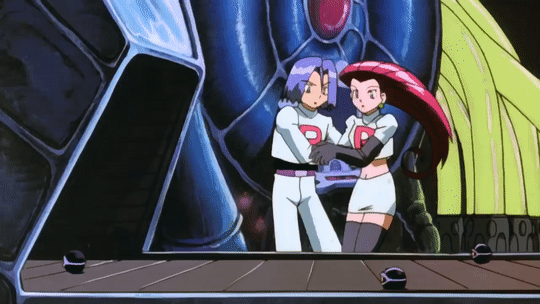
Team Rocket cower in fright, having just moments ago watched perfected pokemon species hatch from advanced technological concoctions, only to now see strange alien-like balls drop onto the conveyer belt and crawl into the ever open maw of the machine.
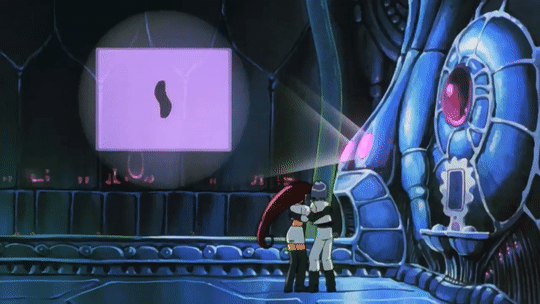
One by one, each stolen pokemon is scanned and quickly identified by the machines brilliant database.

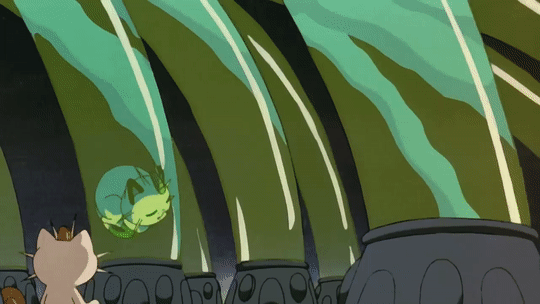
One by one, perfect clones of each of the captured pokemon are spat out from the innards of the machine and rest comfortably in the tubes below.
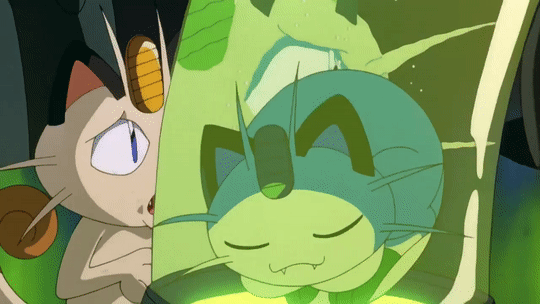
Meowth muses at these marvelous creations, watching them spawn as fast as they are scanned. Seeing his clone rest comfortably within the artificial womb, Meowth can help but reach a paw up to the tube, feeling the warm emanate from the fluid within.

As the machine labors away at churning out perfect replicas free of the stain of human interaction, a foolish and defiant youth rushes into the maw of the collection port. Unwilling to surrender without a fight, the boy clings to the ball containing his Pikachu, unaware of just how futile his efforts are.

Mechanical arms swarm the boy as he tries to the wrestle the ball away. The DNA collection has already been completed of the pokemon within. These arms, as if made of the scientific curiosity of the dead, yearn to pull apart this intrusive organism to see how it ticks...
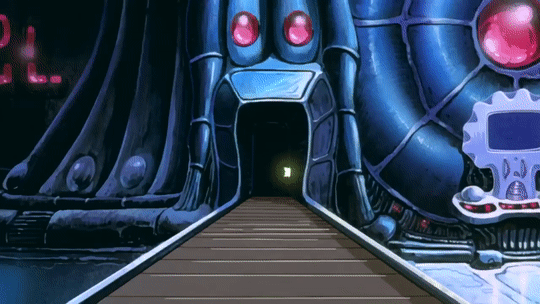
The boy's unyielding struggle are not without consequences, however. Enough of the mechanical claws are severed and short circuited within the collection port that it sparks surging currents enough to cause a chain reaction of malfunctions. With catastrophic damage done, emergency protocols are initiated to ensure the safety of the unborn clones...
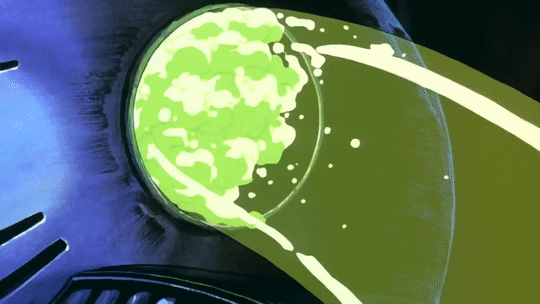
Production and gestation are launched into overdrive. Lucikly, Mewtwo had prepared for such a situation, composing the translucent tubing of extremely flexible and durable material to house and channel an emergency flood of clones.

Swishing, swirling, the clones rain down through the flexible tubes; a soft bottlenecking as first where the main column separates into a near dozen of smaller tubes at a junction of channels hung above the floor. But within moments, the building pressure is relieved as the first wave of cloned pokemon begin to awake; Team Rocket watching in a perverse mix of fright, fascination, and anticipation~

The pulsing tubes feed the sleeping clones into the birthing pods below. Slipping, gurgling squelching noises ring from the gooey membranes as each copy squishes its way through. Pokemon of different shapes and sizes testing the resiliency of the slimy sockets. As each creature slithers out of their scientific birth, the pods behind them have barely a moment to rest and reset before the next wave of clones is born. Humongous species of Rhyhorn, Tentacruel and even Gyarados squeeze into these miracle matter pods, inflating them to unreal proportions before they ooze through the membranes stretched to their limits. A chorus of squishy slurping noises sounding all the while as the final waves of pokemon make their exits. They pay no mind to the humans cowering in the far corner of the laboratory, for they are not threats to their might. Though the machine that birthed them lay in ruins, each newborn clone stands as a token of Mewtwo's victory over the humans that enslaved him, marching to meet their master in marvelous triumph.
21 notes
·
View notes